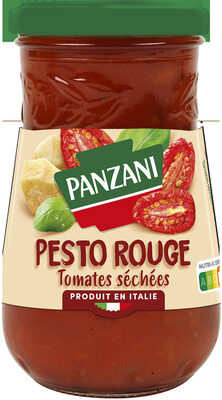Sauce pesto tomates&basilic cisele 200g - Panzani - 200 g
This product page is not complete. You can help to complete it by editing it and adding more data from the photos we have, or by taking more photos using the app for Android or iPhone/iPad. Thank you!
×
Some of the data for this product has been provided directly by the manufacturer PANZANI SA.
Barcode: 3038359005572 (EAN / EAN-13)
Common name: Préparation à base de tomates et d'huile de tournesol
Quantity: 200 g
Packaging: Pot, Jar, fr:Couvercle en métal, fr:Pot en verre
Brands: Panzani
Categories: Condiments, Sauces, Pestos, Red pestos, Groceries, fr:Pâtes au pesto
Labels, certifications, awards: Nutriscore
Origin of the product and/or its ingredients: Italie
Link to the product page on the official site of the producer: https://www.panzani.fr/nos-produits/nos-...
Matching with your preferences
Environment
Carbon footprint
Packaging
Transportation
Other information
Preparation: []
Conservation conditions: Après ouverture, à conserver 3 jours au réfrigérateur
Customer service: Service consommateurs PANZANI - Laura DUVAL , 141, cours Gambetta 69003 LYON
Report a problem
Data sources
The manufacturer PANZANI SA uses Equadis to automatically transmit data and photos for its products.
Product added on by kiliweb
Last edit of product page on by org-panzani-sa.
Product page also edited by date-limite-app, deblg, ecoscore-impact-estimator, feat, moreymat, openfoodfacts-contributors, packbot, prepperapp, quechoisir, roboto-app, yuka.sY2b0xO6T85zoF3NwEKvlmFKUOvushD7HRnvhmqsz_SUHJ_RZ8Nq-tjcLas.










